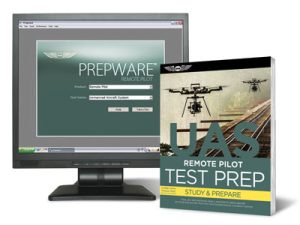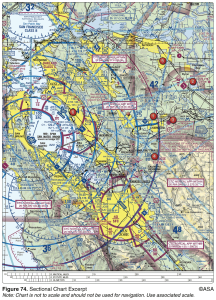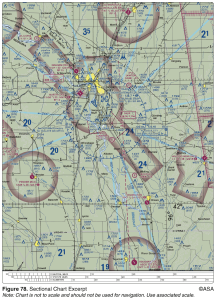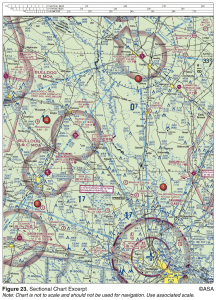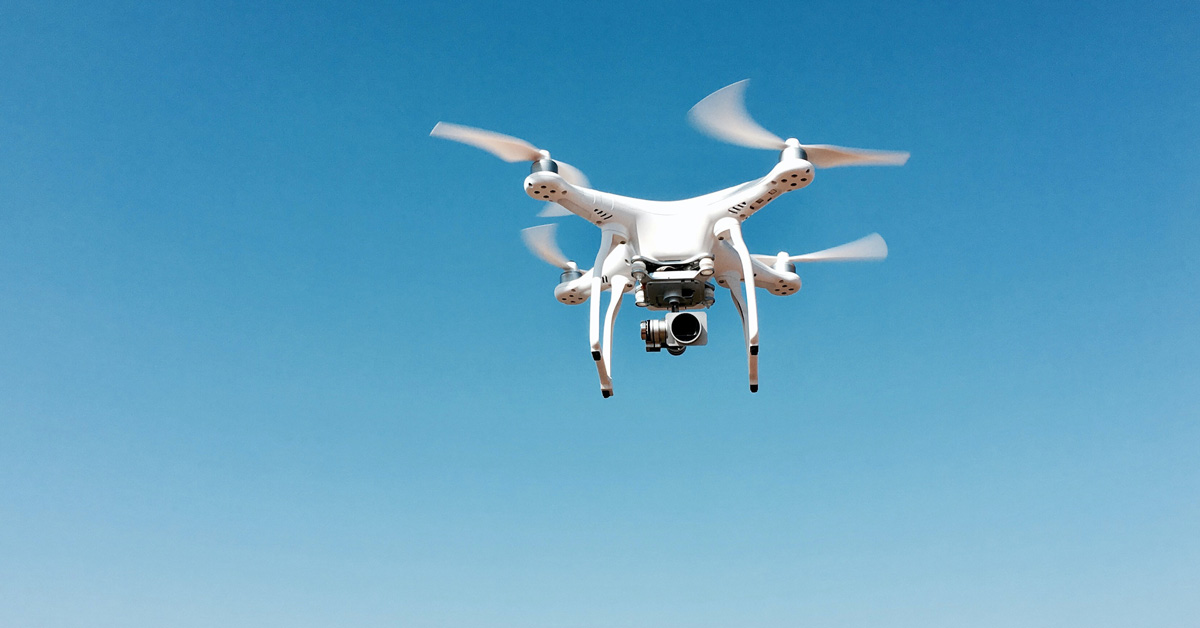Airspace is a significantly important element to sUAS (drone) operations and as the remote pilot-in-command (Remote PIC) it will be your sole responsibility to understand the regulations surrounding airspace operations. In addition to understanding the regulations you will be required to understand the types and classifications of airspace and will need to be able to identify airspace with the use of aeronautical charts. If you have never seen an aeronautical chart like a Sectional or Terminal Area Chart, a great and free online reference is www.SkyVector.com. Below is a featured study section and associated questions from the ASA Remote Pilot Test Prep Book.
It is very important that sUAS remote PICs be aware of the type of airspace in which they will be operating their small UA. Referring to the “B4UFly” app, or a current aeronautical chart (http://faacharts.faa.gov) of the intended operating area will aid a remote PIC’s decision-making regarding sUAS operations in the NAS.
Though many sUAS operations will occur in uncontrolled airspace, there are some that may need to operate in controlled airspace. Operations in what is called controlled airspace, i.e. Class B, Class C, or Class D airspace, or within the lateral boundaries of the surface area of Class E airspace designated for an airport, are not allowed unless that person has prior authorization from ATC.
The sUAS remote PIC must understand airspace classifications and requirements. The authorization process can be found at www.faa.gov/uas. Although sUAS will not be subject to 14 CFR Part 91, the equipage and communications requirements outlined in Part 91 were designed to provide safety and efficiency in controlled airspace. Accordingly, while sUAS operating under 14 CFR Part 107 are not subject to Part 91, as a practical matter, ATC authorization or clearance may depend on operational parameters similar to those found in Part 91. The FAA has the authority to approve or deny aircraft operations based on traffic density, controller workload, communication issues, or any other type of operations that could potentially impact the safe and expeditious flow of air traffic in that airspace. Those planning sUAS operations in controlled airspace are encouraged to contact the FAA as early as possible.
Many sUAS operations can be conducted in uncontrolled, Class G airspace without further permission or authorization. However, controlled airspace operations require prior authorization from ATC and therefore it is incumbent on the remote PIC to be aware of the type of airspace in which they will be operating their sUAS. As with other flight operations, the remote PIC should refer to current aeronautical charts and other navigation tools to determine position and related airspace.
Controlled airspace, that is, airspace within which some or all aircraft may be subject to air traffic control, consists of those areas designated as Class A, Class B, Class C, Class D, and Class E airspace. Much of the controlled airspace begins at either 700 feet or 1,200 feet above the ground. The lateral limits and floors of Class E airspace of 700 feet are defined by a magenta vignette (shading) on the Sectional Chart; while the lateral limits and floors of 1,200 feet are defined by a blue vignette on the Sectional Chart if it abuts uncontrolled airspace. Floors other than 700 feet or 1,200 feet are indicated by a number indicating the floor.
Think you have what it takes to be able to identify airspace on a sectional chart? Between today’s post and Monday’s post let’s see what you got. Click on any of the figures to enlarge.
1. According to 14 CFR Part 107, the remote PIC of a small unmanned aircraft planning to operate within Class C airspace
A—is required to receive ATC authorization.
B—is required to file a flight plan.
C—must use a visual observer.
2. (Refer to Figure 74, area 6.) What airspace is Hayward Executive in?
A—Class B.
B—Class C.
C—Class D.
3. (Refer to Figure 78.) In what airspace is Onawa, IA (K36) located?
A—Class E.
B—Class G.
C—Class D.
4. (Refer to Figure 23, area 3.) What is the floor of the Savannah Class C airspace at the shelf area (outer circle)?
A—1,300 feet AGL.
B—1,300 feet MSL.
C—1,700 feet MSL.


